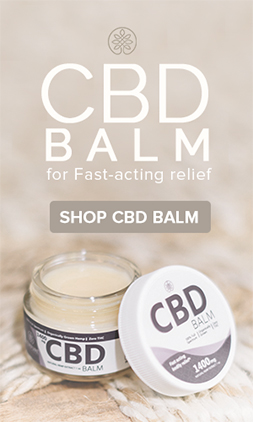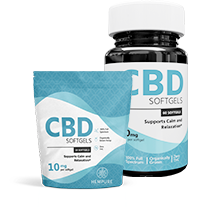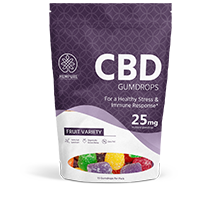Liposomal vs Nano-Emulsified CBD: What is the Best CBD Delivery Method?
Sabina King on Jun 18th 2019
This article takes a look at liposomal CBD, why it matters to you, and the other alternatives to liposomal CBD.
After reading, you’ll have a better understanding of the alternatives to liposomal CBD. You'll also learn why you might want to consider other options. This knowledge will help you in your purchasing decisions. Further, it will help ensure that you buy a CBD product that delivers the results you seek.
What is CBD bioavailability?
To understand liposomal CBD v/s other methods of delivery, one first needs to understand the bioavailability of CBD. Bioavailability refers to the degree and rate at which an administered dose of any substance (in this case, CBD) reaches the target organ (in this case, the endocannabinoid system) unchanged. For instance, if you take a muscle relaxant for a cramp, how much of it is reaching that particular muscle? Bioavailability differs based on how you take a substance. For instance, intravenous administration gives patients 100% bioavailability. This is obviously very important when it comes to pharmaceuticals, vitamins and similar products. But with CBD, there are some unique roadblocks.
Cannabinoids like CBD are lipophilic, which means they dissolve in fats and not water. Anyone manufacturing lipophilic compounds for human consumption faces the same problem: the human body is up to 60% water, which means these compounds won’t dissolve or be absorbed easily. It’s important to note, however, that water solubility issues don’t necessarily affect those who vape CBD, since the cannabinoid molecules are carried through heated vapors that are easily absorbed by the lungs. For CBD that is made to be consumed orally, however, research has provided a few solutions.
An Introduction to Liposomal CBD
The word liposome comes from two Greek words:
- Lipos, means fat
- Soma, means body.

A liposome is a body of fat that surrounds or is attached to another molecule (a vitamin, pharmaceutical or, in this case, CBD) at the molecular level. Scientists and doctors recognize liposomes as a potent means of delivering nutrients.1
These microscopic fat pockets surround the nutrients or medicine they intend to deliver. The body is much more capable of absorbing the nutrients present in a liposome than when those nutrients that are consumed in other oral products.
Why Liposomal CBD Oil May Not be the Best
While liposomal CBD oil is an effective means of absorbing CBD, there are other options available that may offer better absorption.
Does water-soluble CBD exist?
As mentioned earlier, CBD is hydrophobic, which means it repels water. You may have seen labels for ‘water-soluble’ CBD around. Within the CBD manufacturing community, water-soluble CBD refers to ‘water-compatible CBD’. These CBD particles don’t truly dissolve in water, but they can be made water friendly. If one reduces a particle of a compound to a small enough size, it disperses easily through water, and increases the surface area of the compound. Manufacturers can reduce CBD particle sizes and emulsify or mix them into a carrier compound that is highly compatible with water. The most commonly used emulsions are nano-emulsions for their efficiency.
Nano-Emulsified CBD
This form of CBD comprises molecules smaller than those found in liposomal CBD.
When used as a method for delivering CBD and other insoluble compounds, nano-emulsified substances are absorbed at higher rates in the body than other methods of delivery.2
Size is an important consideration when purchasing CBD oil for a few reasons. Take a look at the image below:

The average size of a nano-emulsified droplet of oil is 25 nanometers in comparison to liposomal CBD that is between 100-5000 nanometers. For reference, a nanometer is one-billionth of a millimeter, which is the approximate size of the diameter of lead in a pencil. The smaller the drop, the easier it is for your body to absorb it. This is because smaller drops have a larger surface area interacting with the body’s enzymes and tissue.3 When this happens, the body absorbs CBD more efficiently.
Nano-emulsified CBD products are also usually mixed with penetration enhancers such as ethanol or propylene glycol. They can help CBD spread over skin and mucous membranes. Instead of these chemicals, Hempure CBD uses MCT oil. MCT oil comes from coconut oil, and is known for boosting the absorption rates of CBD and being great for the body and mind too.
Nano-emulsion is not new to the world of science. It has been well researched with different compounds. Nano-emulsions are also very useful in topical CBD formulations, where smaller CBD molecules can pass through tight spaces between cells.
Micro-emulsions are also available, but not commonly used. To make either micro or nano-emulsions, one would need to use surfactants to dilute the compound. When making goods that will be ingested, the best practice is to use as few surfactants as possible, which is why nano-emulsions are more popular than micro-emulsions. Micro-emulsions require 10 times the amount of surfactants that nano-emulsions do. It’s also important to note that a lot of companies claim that CBD isolate is water soluble, which might make sense at face value since CBD isolate is often in crystalline form. However, CBD is always hydrophobic, regardless of whether it is isolated or what form it’s in.
What are the practical differences to you?
We recommend nano-emulsified CBD oil. Why?
Greater absorption means you need to use less, making your bottle last longer
When purchasing nano-emulsified CBD, you get more value because your body will utilize more of the CBD.When using liposomal CBD, your body does not end up using as much CBD as when it is in nano-emulsified form.Taking 3 mg of liposomal CBD is not the same as taking 3 mg of nano-emulsified CBD. Thus, you’ll take more liposomal CBD to get the effects of nano-emulsified CBD.
Value for money.
If you’re the kind of person that likes to make every dollar count, nanoemulsions are what you want. You’re making the most of every drop.
Faster effects.
Nanoemulsions absorb into the body very quickly, which means the CBD starts working quicker.
Versatility.
Since nano-emulsions are so water-compatible, they blend easily into food and beverages.
Consistency is key! Even dose with every serving.
Your CBD oil should be stable and even throughout.4 Nano-emulsified CBD stays in solution evenly, while Liposomal CBD may produce an uneven mixture resulting in some doses having more CBD than others. This can be ineffective for you if you want to take a consistent amount of CBD daily. See our CBD dosage chart for the correct amounts.
Choosing the best nano-emulsified CBD
Since the CBD market is rife with misinformation, here are some things to watch out for when buying nano-emulsified CBD.
Untested CBD products
Like we said, nano-emulsified CBD gets absorbed very quickly and with high rates of bioavailability. This makes it more important that your CBD comes from organically grown hemp, with no toxins, heavy metals or pesticides in the final product. Third-party lab tests can confirm that your CBD is clean.
Cloudy liquids
Your final product should be clear, not translucent. High-quality nano-emulsions will let light pass through.
Conclusion: Liposomal CBD and Nano-emulsified CBD
While Liposomes are a better alternative than standard CBD, they are not as effective as nano-emulsified CBD. Nano-emulsified CBD offers even greater absorption. In order to find out if a product is liposomal or nano-emulsified, check the label.
Now you know the difference.

















